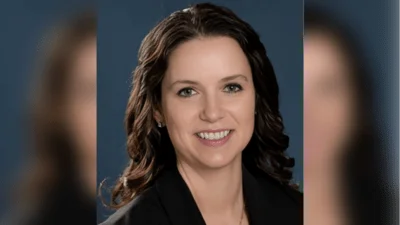City of Urbana Traffic Commission met April 10.
Here is the minutes provided by the Commission:
Approval of Minutes:
Sylvia Morgan moved to approve the minutes of the March 13, 2018 meeting. Craig Shonkwiler seconded the motion. The Commission voted 3-0 to approve the minutes of the March meeting.
Additions to the agenda:
There were no additions to the agenda.
Public Input
Those wishing to provide input did so as items were discussed.
Unfinished Business
Item #1- Discussion of parking at 2008 Vawter Street.
Dean Hazen reviewed the discussion about parking in front of 2008 Vawter Street from the March Traffic Commission meeting. He stated that the Commissioners asked to send the property owner an invitation to the April Traffic Commission meeting.
It was noted that an invitation to the meeting was sent to the property owner and that the property owner did not attend the meeting.
Dawn Friedman stated that a student who used a wheelchair came from the apartment to ride the bus to school. She said that the bus was unable to lower the bus ramp when vehicles parked in front of the sidewalk.
Sylvia Morgan said that there were temporary no parking signs installed in that area. She added that if vehicles were disregarding the parking restrictions, enforcement could ticket the vehicles.
Ms. Friedman replied that motorists were obeying the signs and providing the necessary space in front of the sidewalk for the bus driver to drop the bus ramp.
Mr. Shonkwiler asked if there was a time when the restrictions would be needed.
Ms. Friedman felt that 7:00 a.m. to 4:00 p.m. would allow the bus service to take the student to and from school. Mr. Shonkwiler mentioned that the distance recommended at the previous meeting was 25 feet on either side of the sidewalk.
Ms. Friedman said that the space allowed with the temporary restrictions was enough space for a full-size bus to park.
Mr. Shonkwiler recommended mirroring the current space for the permanent parking restriction.
Craig Shonkwiler moved to install parking restrictions in front of 2008 Vawter Street from 7:00 a.m. to 4:00 p.m., Monday through Friday, for a distance to be determined by Engineering staff to provide room for bus loading and unloading.
Sylvia Morgan seconded the motion.
The motion was approved 3-0.
This item will go to Council for consideration.
New Business
Item #2- Discussion of traffic control on Lincoln Avenue between Pennsylvania Avenue and Nevada Street (including Lincoln/Michigan, Lincoln/Indiana, Lincoln/Ohio, and Lincoln/Iowa intersections).
Craig Shonkwiler discussed concerns that the City had received regarding traffic conflicts at Lincoln Avenue and Ohio Street, Lincoln Avenue and Iowa Street, and possibly at Lincoln Avenue and Indiana Avenue and Lincoln Avenue and Michigan Avenue. He said that Engineering Division staff had conducted analysis of the corridor, including traffic counts at each of the intersections.
Taylor Moen, who was a member of Alpha Gamma Delta, located at the corner of Lincoln Avenue and Ohio Street, stated that she felt unsafe when crossing Lincoln Avenue. She mentioned that earlier in the school year, a car hit a friend. While Ms. Moen admitted that the person was jaywalking, she mentioned that vehicles frequently would not stop for pedestrians who were waiting to cross. She said that it was unfortunate for her friend since her friend had to drop out of school to recuperate from her injuries. She added that cars travelled too fast on Lincoln Avenue.
Chair Hazen said that students needed to remain alert when crossing busy streets, such as Lincoln Avenue.
Alana Dean said that she was a member of Kappa Kappa Gamma, which was located on Lincoln Avenue. She said that a car nicked one of their members as she crossed Lincoln Avenue. She mentioned that it was very dark and recommended that cars should stop when pedestrians were trying to cross.
Stacey DeLorenzo stated that the University of Illinois had a Lighting Commission that would meet to suggest ideas to improve visibility along the corridor.
Tracey Pettigrew suggested looking for funding from the University of Illinois Dad’s Association.
He mentioned that the organization had provided funding for various projects on campus.
Ms. DeLorenzo said that the streetlights illuminated the roadways and not the sidewalks. She stated that she would work with the City of Urbana to try to improve safety along the corridor.
Ms. Moen recognized that it was difficult for the University to solve the problem since the roadway was outside of the University’s jurisdiction.
Chair Hazen asked what type of education had the students received regarding safely crossing roadways.
Ms. Dean said that there was no training. She felt that emphasis of orientation was placed on harassment and drinking, but not on pedestrian safety.
Mr. Pettigrew suggested contacting the Active Transportation Coordinator on campus to provide training to those students who live off-campus.
Ms. DeLorenzo said that the Active Transportation Coordinator, Lily Wilcock, would work with the Greek associations and off-campus housing to provide training.
Jacob Rajlich said that the only training he received was from upperclass students who told him that pedestrians always had the right-of-way.
Chair Hazen stated that he was not trying to push blame onto pedestrians, but he said pedestrians should try to take steps to be safe. He suggested wearing clothing that would make pedestrians visible at night and avoiding the use of cell phones and earphones when crossing roadways.
Ms. DeLorenzo said that she would encourage the Active Transportation Coordinator to visit the Greek organizations and off-campus housing to develop safety programs for residents.
Mr. Pettigrew emphasized the important role that the Greek leaders could fill by discussing pedestrian safety with their organizations.
Ms. DeLorenzo said that Quad Day would be a good time to coordinate a transportation safety educational program. She said that she would talk to Ms. Wilcock and recommend that discussions include Greek organizations and certified off-campus housing. She agreed to discuss this topic in the next U of I Facilities and Services Transportation Committee meeting.
Bill Brown explained that there were regional differences in the way motorists and pedestrians interact. He urged pedestrians to remain alert and know that motorists may not slow upon seeing a pedestrian at the side of the street.
Ms. DeLorenzo stated that a vehicle must stop if a pedestrian was in the crosswalk.
Mr. Pettigrew recommended that pedestrians make sure that the roadway was clear before entering the crosswalk. He encouraged those representing other University students to let the University, MTD or the City know what resources would help educate students using the transportation system in and around the University.
Craig Shonkwiler explained that the Engineering Division looked at the transportation system to determine what measures could be taken to make the system safer. He mentioned that in 2006, improvements made on Lincoln Avenue changed the roadway from a four-lane roadway to a threelane roadway, one of which was a center turn lane and included a loading zone on the east side. Mr. Shonkwiler stated that staff reviewed the crash history, lighting (lighting will be reviewed in a later study), and volume of pedestrians and vehicles. He added that staff used the Champaign-Urbana Crosswalk Guidelines to recommend enhancements at each particular location to improve safety on the roadway. He introduced Mr. Jayme to discuss the results of the study.
David Jayme discussed the analysis of the Lincoln Avenue Corridor Study, which included Lincoln Avenue from Pennsylvania Avenue to Nevada Street and the Michigan Avenue, Indiana Avenue, Ohio Avenue and Iowa Avenue intersections with Lincoln Avenue. Mr. Jayme reviewed the fiveyear crash data from 2013 to 2017. He noted that slightly more than 80% of the 73 total crashes were rear-end crashes, seven of the crashes involved pedestrians, and one of the crashes involved a bicyclist. Mr. Jayme stated that of the 73 crashes, there was one Type K or fatality, six Type A or incapacitating injuries, and three Type B or non-incapacitating injuries. He noted that the roadway design did not have any impact on the circumstances involved in the fatal crash.
Specifically, at Lincoln Avenue and Iowa Street, 23 of the 73 crashes occurred. Mr. Jayme noted that three of those crashes involved pedestrians, of which one could have been correctable since tree shadows made the pedestrian difficult to see when crossing the street. At Lincoln Avenue and Ohio Street, there were 20 crashes; one crash involved a bicyclist; four crashes involved pedestrians. All of the crashes were potentially correctable with pedestrian treatments. At Lincoln Avenue and Indiana Avenue, there was a reduction in pedestrian traffic. There were three crashes, all of which were rear-end crashes, potentially correctable with pedestrian treatments. At Lincoln Avenue and Michigan Avenue, there were four crashes; all were rear-end crashes due to stopping for pedestrians within the crosswalk.
Mr. Shonkwiler summarized the statistics stating that there were issues at the intersections of Lincoln Avenue and Ohio Street and at Lincoln Avenue and Iowa Street, but no pedestrian/bicycle crashes at the intersections of Lincoln Avenue and Indiana Avenue and Lincoln Avenue and Michigan Avenue. He said that reported crashes carry weight when applying for grants so funding for more enhancements might be available at the intersections where crashes had occurred.
Ms. DeLorenzo said that the numbers were for reported crashes and did not mean that there were not more crashes—the numbers meant that those were crashes where a person filed a police report.
Mr. Shonkwiler confirmed that the statistics were from reported crashes. He stated that the confirmed crashes would be important information when applying for grants.
Mr. Jayme said that it was important to have the information about volume since recommending treatments based upon the Champaign-Urbana Crosswalk Guidelines would be dependent upon the number of pedestrians, bicycles and motorized vehicles and the vehicle speed within the corridor. He mentioned that the traffic volumes at Lincoln Avenue and the intersections of Michigan Avenue and Indiana Avenue did not show conflict between pedestrians and motor vehicles. He stated that the speed limit along the corridor was posted at 30 miles per hour. He noted that the vehicle speeds for the 85th percentile were 32 miles per hour for northbound vehicles and 29 miles per hour for southbound traffic.
Mr. Shonkwiler said that the 85th percentile speed was within five miles per hour of the posted speed so there was no excessive speeding along the corridor. He added that it did not prohibit the adjustment of the speed limit.
Mr. Jayme said that the current speed was appropriate given the traffic speeds and State of Illinois legal speed limits.
Chief Morgan said that it was difficult to speed within that corridor, but unfortunately, speeds of 30 miles per hour when involving pedestrians could result in injuries.
Stacey DeLorenzo stated that the University was having problems with motorists exceeding the speed limits on Lincoln Avenue south of Florida Avenue. She said the University was considering a reduced speed limit on Lincoln Avenue between Florida Avenue and Windsor Road.
David Jayme recommended taking the following steps at the intersections of Lincoln Avenue with Iowa Street, Ohio Street and Indiana Avenue based upon the Champaign Urbana Crosswalk Guidelines given the peak pedestrian volumes of 20 or more with high vehicle volumes and moderate speeds. First, Mr. Jayme recommended the installation of bump outs and a median refuge island to reduce the amount of time pedestrians would be in the roadway. In addition, he recommended that installation of a pedestrian-activated, enhanced pedestrian warning signs to draw motorists’ attention when pedestrians enter the roadway. The intersection of Lincoln Avenue and Michigan Avenue was not included in the recommendation since the pedestrian volumes at that intersection were lower than 20 during peak hours. (Mr. Jayme explained that a bump out was an extension of the curb into the roadway that reduced the amount of time a pedestrian would be in the drivable roadway when crossing from one side of the road to the other.)
Mr. Shonkwiler stated that there was no funding available for the project at this time, but the City would apply for a Highway Safety Improvement Program (HSIP) grant for the entire corridor in a year. He explained the Illinois Department of Transportation administered the HSIP grant. He felt that the number of Type A and Type B crashes might improve the chances of receiving the grant within the next year. He stated that if a grant were approved, a Phase I study would be conducted to study the lighting levels along the corridor and an environmental study. In the interim, Mr. Shonkwiler recommended a reduction of the speed limit from 30 miles per hour to 25 miles per hour. He said that since the corridor bordered the University of Illinois and had a high volume of pedestrians crossing the roadway, the reduced speed limit would complement the existing 25-milean-hour speed limit within the University District. He recommended the installation of advanced warning signs at Nevada Street and Pennsylvania Avenue. He added the lower speed limit and signage would let motorists know that they were in a high volume pedestrian area. He said that the signage might be flashing signs stating that the corridor was a high pedestrian area. He said the short-term plan was to reduce the speed limit to 25 miles per hour and install advanced warning signs. He said that the long-term plan would be to apply for the HSIP grant and make infrastructure improvements over the next several years.
Dean Hazen thought the reduction of the speed limit was a good idea.
Tracey Pettigrew was concerned about the increase in rear-end crashes and traffic bottlenecks when vehicles were stopped for pedestrian crossings.
Stacey DeLorenzo hoped that the reduction in speed might discourage vehicular traffic around campus.
Craig Shonkwiler explained that traffic signals were more likely to have rear-end crashes. He said that the pedestrian warning signs with flashing lights would allow motorists more reaction time to stop. He would prefer crashes involving vehicles over crashes involving pedestrians and vehicles.
Tracey Pettigrew stated that the level of driving on Lincoln Avenue was different from the drivingon Springfield Avenue where the road extended through campus. He said that pedestrians needed to be cognizant of motorists who would not stop for pedestrians.
Bill Brown said that traffic on Lincoln Avenue might not be as bad as traffic on Springfield Avenue since pedestrians would not have to cross Lincoln Avenue to go from one class to another.
Mr. Pettigrew explained that Lincoln Avenue was one of the few north/south access streets for Urbana. He mentioned that Lincoln Avenue was not only used by those travelling to and from the University, but it was also used by those travelling to other destinations within the City. He felt that educational efforts were needed to improve safety on Lincoln Avenue.
Mr. Jayme mentioned that the solution to improve safety along the corridor was multi-faceted. He added that the installation of bump-outs would be one tool that would improve pedestrian safety at the intersections on Lincoln Avenue.
Chief Morgan said there needed to be an approach to address the immediate issue of pedestrian conflicts and that there was a good long-range plan for the corridor.
Mr. Shonkwiler said that further study was needed on the corridor to make sure emergency vehicles were able to navigate the roadway with the enhancements. He said that corridor borders the University of Illinois campus so the reduced speed limit would warn motorists to be aware of changes in roadway users.
Chair Hazen thought it was the best plan considering costs.
Bill Brown expressed concern that the bump outs at the intersection might push bicyclists who had been using the striped pavement along the edges of Lincoln Avenue into traffic.
Mr. Shonkwiler noted that bicyclists on Lincoln Avenue share the road with motorists. He said that Iowa Street was a bike route and that a bike path would be installed at the intersection. He noted that staff would monitor the adjacent streets to determine if there would be any impacts to those streets with the installation of the 25 mile-per-hour speed limit on Lincoln Avenue.
Discussion followed regarding how to implement the plan.
Craig Shonkwiler moved to reduce the speed limit on Lincoln Avenue from Pennsylvania Avenue to Nevada Street from 30 miles per hour to 25 miles per hour and to install advanced warning signs at the north and south ends of the corridor on Lincoln Avenue from Pennsylvania Avenue to Nevada Street.
Sylvia Morgan seconded the motion.
The motion was approved 3-0.
The recommendation for reduced speed limit would go the Committee of the Whole for consideration.
Public Works staff would install the signage recommendation.
Mr. Shonkwiler said that those who expressed interest in this issue would be notified when this item was sent to the Committee for action.
The request to reduce the speed limit will go to Council for consideration.
With no other business at hand, the meeting was adjourned at 5:05 p.m.
https://www.urbanaillinois.us/sites/default/files/attachments/MINUTES%20Apr%2018%20%20Approved.pdf






 Alerts Sign-up
Alerts Sign-up